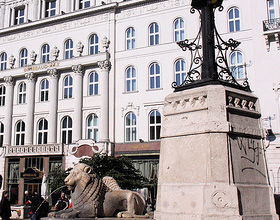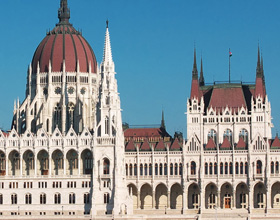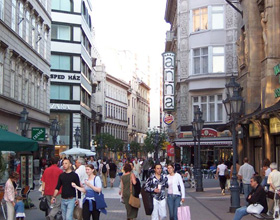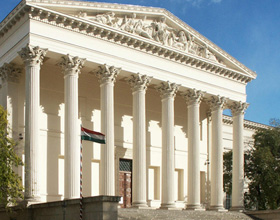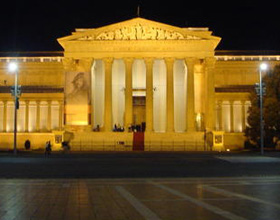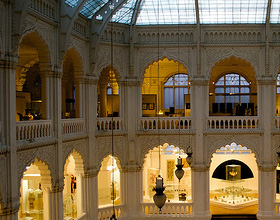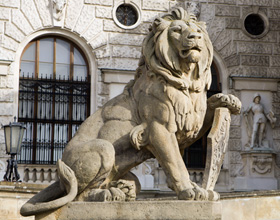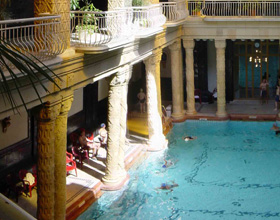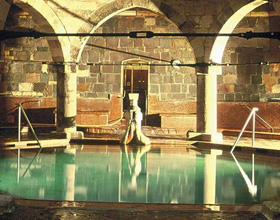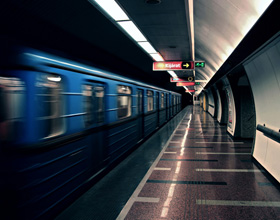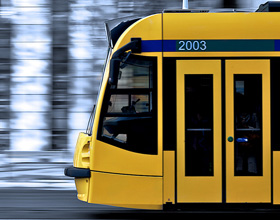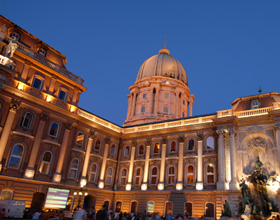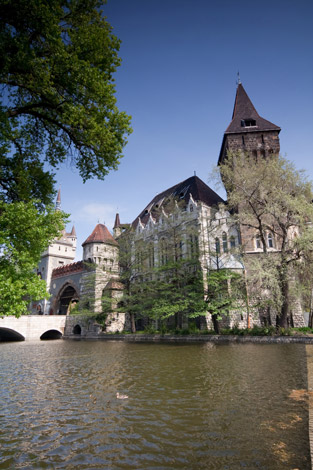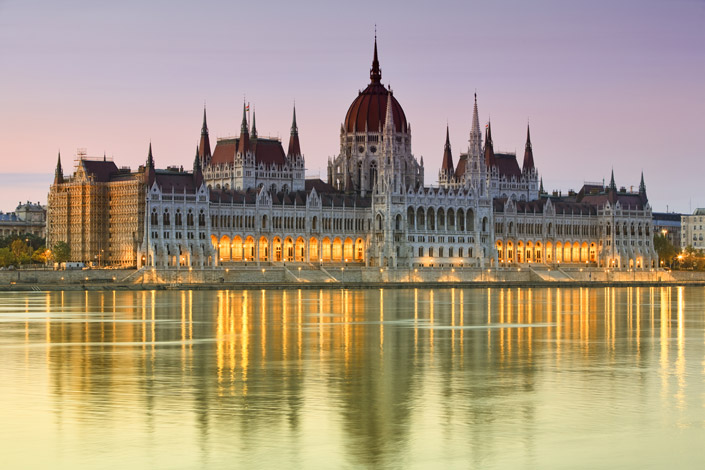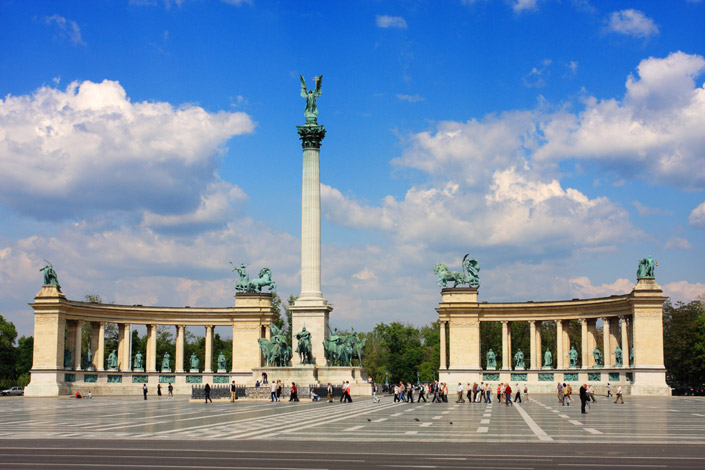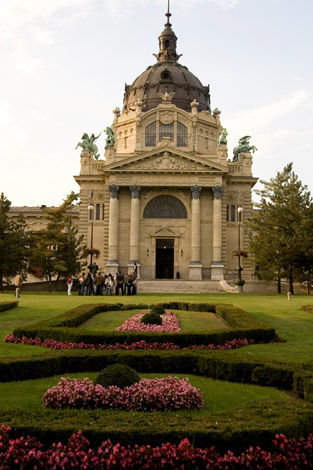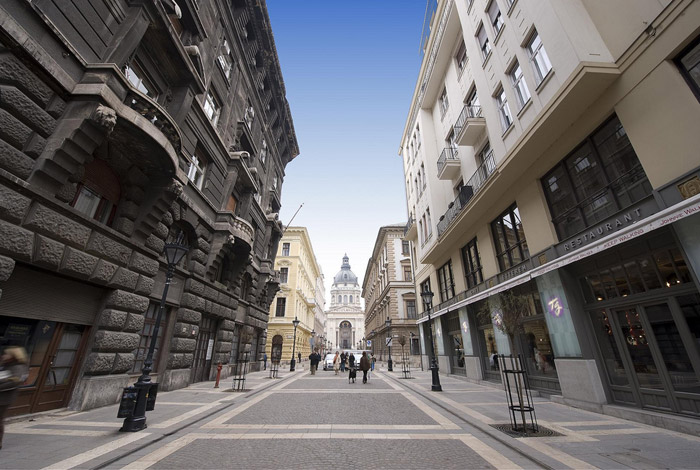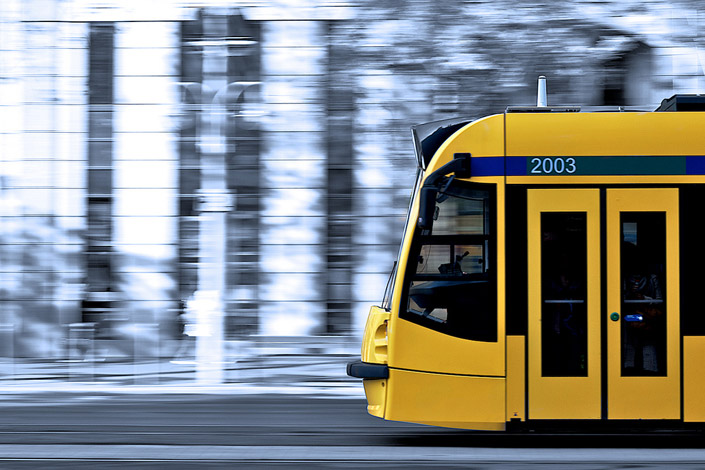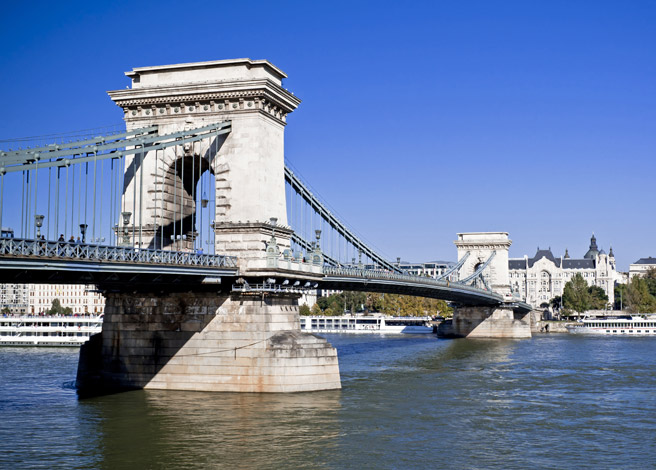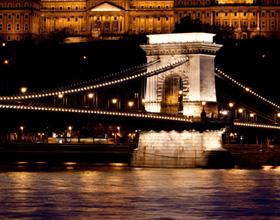
Budapest is the capital city of Hungary. One of the most beautiful historical capitals in Europe, is situated on the banks of the Danube. The city actually consists of three cities, Óbuda, the oldest section, with Celtic and Roman ruins, Buda in hills on the western bank, famous for its historic Castle Hill and beautiful residential area, and bustling Pest with its shopping, government and commercial districts on the flat plain of the east bank. The city has a population of about 1.7 million people. The Budapest Commuter Area is home to 3,271,110 people. The city covers an area of 525 square kilometers (202.7 sq mi) within the city limits. Budapest became a single city occupying both banks of the river Danube with a unification on 17 November 1873 of right (west)-bank Buda and Obuda with left (east)-bank Pest.
Historically,Aquincum originally a Celtic settlement, was the direct ancestor of Budapest, becoming the Roman capital of Lower Pannonia Magyars arrived in the territory in the 9th century. Their first settlement was pillaged by the Mongols in 1241-42. The re-established town became one of the centers of Renaissance humanist culture in the 15th century. Following the Battle of Mohács and nearly 150 years of Ottoman rule, development of the region entered a new age of prosperity in the 18th and 19th centuries, and Budapest became a global city after the 1873 unification. It also became the second capital of Austria-Hungary, a great power that dissolved in 1918. Budapest was the focal point of the Hungarian Revolution of 1848, the Hungarian Soviet Republic of 1919, Operation Panzerfaust in 1944, the Battle of Budapest of 1945, and the Revolution of 1956.
Cited as one of the most beautiful cities in Europe, its extensive World Heritage Site includes the banks of the Danube, the Buda Castle Quarter, Andrássy Avenue, Heroes' Square and the Millennium Underground Railway, the second oldest in the world. Other highlights include a total of 80 geothermal springs, the world's largest thermal water cave system, second largest synagogue, and third largest Parliament building. The city attracts about 2.3 million tourists a year,
Considered an important hub in Central Europe, the city ranked 3rd (out of 65 cities) on Mastercard's Emerging Markets Index (2008), and ranked as the most livable Central/Eastern European city on EIU's quality of life index (both 2009 & 2010). It is also ranked as "Europe's 7th most idyllic place to live" by Forbes. It is the highest ranked Central/Eastern European city on Innovation Cities' Top 100 index, and has featured well in a number of specialist rankings.
Budapest is home to the headquarters of the European Institute of Innovation and Technology (EIT), and the first foreign office of the CIPA.
History
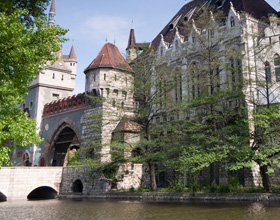
The first settlement on the territory of Budapest was built by Celts before 1 AD. It was later occupied by the Romans. The Roman settlement - Aquincum - became the main city of Lower Pannonia in 106 AD. The Romans constructed roads, amphitheaters, baths and houses with heated floors in this fortified military camp.
The peace treaty of 829 added Pannonia to Bulgaria due to the victory of Bulgarian army of Omurtag over Holy Roman Empire of Louis the Pious. Budapest arose out of two Bulgarian military frontier fortresses Buda and Pest, situated on the two banks of Danube. Hungarians led by Árpád settled in the territory at the end of the 9th century, and a century later officially founded the Kingdom of Hungary. Research places the probable residence of the Árpáds as an early place of central power near what became Budapest. The Tatar invasion in the 13th century quickly proved that defence is difficult on a plain. King Béla IV of Hungary therefore ordered the construction of reinforced stone walls around the towns and set his own royal palace on the top of the protecting hills of Buda. In 1361 it became the capital of Hungary.
The cultural role of Buda was particularly significant during the reign of Matthias Corvinus of Hungary. The Italian Renaissance had a great influence on the city. His library, the Bibliotheca Corviniana, was Europe's greatest collection of historical chronicles and philosophic and scientific works in the 15th century, and second only in size to the Vatican Library. After the foundation of the first Hungarian university in Pécs in 1367, the second one was established in Óbuda in 1395. The first Hungarian book was printed in Buda in 1473. Buda had about 5,000 inhabitants around 1500.
Hungarian Royal Palace (picture from 1930).
The Ottomans pillaged Buda in 1526, besieged it in 1529, and finally occupied it in 1541. The Turkish occupation lasted for more than 140 years. The Turks constructed some fine bathing facilities here. Under Ottoman rule almost all Christians left the city and it became a truly Muslim town. By 1547 the number of Christians was around one thousand. In 1647 it had fallen to about seventy. The unoccupied western part of the country became part of the Habsburg Empire as Royal Hungary.
In 1686, two years after the unsuccessful siege of Buda, a renewed campaign was started to enter the Hungarian capital. This time, the Holy League's army was twice as large, containing over 74,000 men, including German, Croat, Dutch, Hungarian, English, Spanish, Czech, Italian, French, Burgundian, Danish and Swedish soldiers, along with other Europeans as volunteers, artilleryman, and officers, the Christian forces reconquered Buda, and in the next few years, all of the former Hungarian lands, except areas near Timişoara (Temesvár), were taken from the Turks. In the 1699 Treaty of Karlowitz these territorial changes were officially recognized, and in 1718 the entire Kingdom of Hungary was removed from Ottoman rule.
The city was destroyed during the battle. Hungary was then incorporated into the Habsburg Empire.
The nineteenth century was dominated by the Hungarians' struggle for independence and modernization. The national insurrection against the Habsburgs began in the Hungarian capital in 1848 and was defeated a little more than a year later.
The Hungarian State Opera House, built in the time of Austria-Hungary.
1867 was the year of Reconciliation that brought about the birth of Austria-Hungary.
Cutaway Drawing of Millennium Underground in Budapest (1894–1896) which was the second underground in the world.
The polyethnic nature of Budapest in 1919. During the Hungarian Soviet Republic the Heroes Square of Budapest was completely demolished and rebuilt into Marx-Engels memorial by the communists. The statues of Hungarian national heroes were toppled. The Hungarian national symbols were banned, many Hungarian historic monuments were destroyed in the name of internationalism.
This made Budapest the twin capital of a dual monarchy. It was this compromise which opened the second great phase of development in the history of Budapest, lasting until World War I. In 1873 Buda and Pest were officially merged with the third part, Óbuda (Ancient Buda), thus creating the new metropolis of Budapest. The dynamic Pest grew into the country's administrative, political, economic, trade and cultural hub. Budapest went from about 80% German-speaking in 1848 to about 80% Hungarian-speaking in 1880. The capital, Budapest, was 23% Jewish. Due to the prosperity and the large Jewish community of the city, Budapest was often called as the "Jewish Mecca"World War I brought the Golden Age to an end. In 1918 Austria-Hungary lost the war and collapsed; Hungary declared itself an independent republic. In 1920 the Treaty of Trianon finalized the country's partition, as a result, Hungary lost over two-thirds of its territory, about two-thirds of its inhabitants under the treaty including 3.3 million out of 10 million ethnic Hungarians.
In 1944, towards the end of World War II, Budapest was partly destroyed by British and American air raids. From 24 December 1944 to 13 February 1945, the city was besieged during the Battle of Budapest. Budapest suffered major damage caused by the attacking Soviet troops and the defending German and Hungarian troops. All bridges were destroyed by the Germans. More than 38,000 civilians lost their lives during the conflict.
In 1949, Hungary was declared a communist People's Republic. The new Communist government considered the buildings like the Buda Castle symbols of the former regime, and during the 1950s the palace was gutted and all the interiors were destroyed.
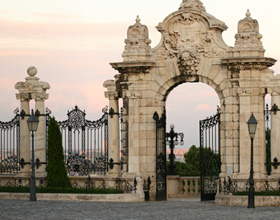
In 1956, peaceful demonstrations in Budapest led to the outbreak of the Hungarian Revolution. The Leadership collapsed after mass demonstrations began on 23 October, but Soviet tanks entered Budapest to crush the revolt. Fighting continued until early November, leaving more than 3000 dead.
From the 1960s to the late 1980s Hungary was often satirically referred to as "the happiest barrack" within the Eastern bloc, and much of the wartime damage to the city was finally repaired. Work on Erzsébet Bridge, the last to be rebuilt, was finished in 1965. In the early 1970s, Budapest Metro's East-West M2 line was first opened, followed by the M3 line in 1982. In 1987, Buda Castle and the banks of the Danube were included in the UNESCO list of World Heritage Sites. Andrassy Avenue (including the Millennium Underground Railway, Hősök tere and Városliget) was added to the UNESCO list in 2002. In the 1980s the city's population reached 2.1 million. In recent times a significant decrease in population occurred mainly due to a massive movement to the neighbouring agglomeration in Pest county. In the last decades of the 20th century the political changes of 1989-90 concealed changes in civil society and along the streets of Budapest. The monuments of the dictatorship were taken down from public places, into Memento Park.
